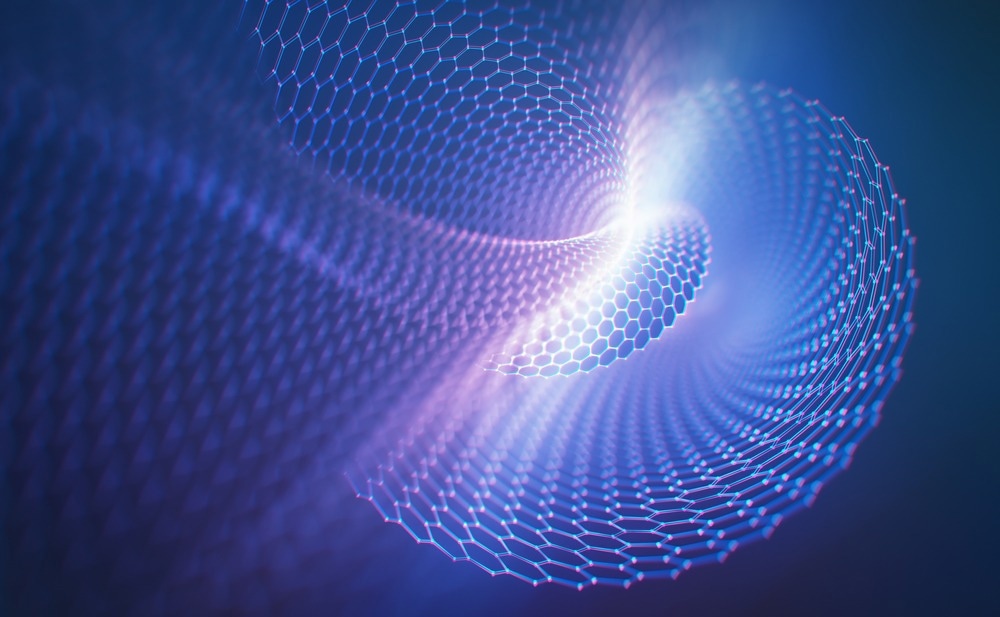Scientists at the University of Manchester’s National Graphene Institute have found a mechanism to speed proton transport across graphene using light, which has the potential to completely change how hydrogen is produced.

Image Credit: ktsdesign/Shutterstock.com
Proton transport is a crucial stage in many renewable energy technologies, including solar water splitting and hydrogen fuel cells. Scientists in Manchester have previously demonstrated that protons can pass through it.
A new study published in Nature Communications has demonstrated that proton transport across graphene can be sped up with light. A single sheet of carbon atoms called graphene has exceptional electrical and thermal conductivity. Graphene was originally believed to be impervious to protons, though.
The researchers discovered that when graphene is exposed to light, the electrons in the material become energized. These excited electrons then engage with protons, which speeds up their movement through the material.
This discovery has the potential to significantly influence the development of new renewable energy solutions. It might, for example, spur the development of more efficient hydrogen fuel cells and solar water-splitting systems.
Understanding the connection between electronic and ion transport properties in electrode-electrolyte interfaces at the molecular scale could enable new strategies to accelerate processes central to many renewable energy technologies, including hydrogen generation and utilization.
Dr. Marcelo Lozada-Hidalgo, Lead Researcher, University of Manchester
Graphene, a single layer of carbon atoms, is an efficient electronic conductor that has also been discovered to be permeable to protons. However, its proton and electronic properties were thought to be unconnected. The researchers next evaluated both graphene’s proton transport and electronic properties under illumination and discovered that activating electrons in graphene with light speeds up proton transport.
Detecting a phenomenon known as ‘Pauli blocking’ in proton transport provided the smoking gun evidence of this connection. This novel electronic feature of graphene has never been observed in proton transport. In essence, it is feasible to increase the energy of electrons in graphene to the point that it no longer absorbs light, which explains the ‘blocking.’
By increasing the energy of electrons in graphene, the researchers show that the same blocking occurs in light-driven proton transport. This unexpected finding reveals that graphene’s electronic properties are critical for proton permeation.
We were surprised that the photo response of our proton conducting devices could be explained by the Pauli blocking mechanism, which so far had only been seen in electronic measurements. This provides insight into how protons, electrons and photons interact in atomically thin interfaces.
Dr. Shiqi Huang, Study Co-First Author and SNSF Postdoctoral Fellow, University of Manchester
D. Eoin Griffin, study Co-First Author, added, “In our devices, graphene is being effectively bombarded with protons, which pierce its electronic cloud. We were surprised to see that photo-excited electrons could control this flow of protons.”
Journal Reference:
Huang, S., et al. (2023) Gate-controlled suppression of light-driven proton transport through graphene electrodes. Nature Communications. doi:10.1038/s41467-023-42617-4.